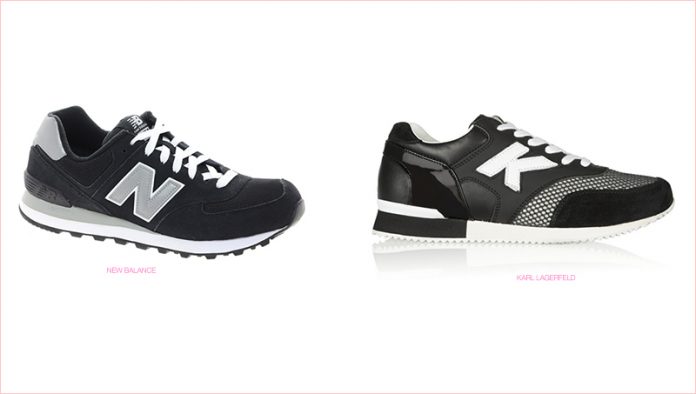
This article is written by Parshav Jain pursuing a Certificate Course in Intellectual Property Law and Prosecution from LawSikho.
Table of Contents
Introduction
Design, just like other intellectual properties, is too inclined to infringement. An infringement of design is the illegal act to use a registered design, or fraudulent copying of an already registered design, without authorization from the owner of such a registered design. Any owner whose article/design has been registered already, in such a case of infringement, can go ahead to file for a suit to recover damages from the infringer and further ask the infringer to stop such Infringement.
What is design?
Design and the right to protect it is an intellectual property right (IPR) that protects the visuals and objects of any design that is not purely under the theory of morality. In general terms, the design is just an outlook of any article via naked eyes. But, the definition of design under legal language changes itself into features of shape, configuration, pattern, ornament, or composition of lines or colors applied to any article, whether in two dimensional or three dimensional or both forms, by any industrial process or means, whether manual, mechanical or chemical, separate or combined, which in the finished article appeal to and are judged solely by the eye, but does not include any mode or principle of construction or anything which is in substance a mere mechanical device, and does not include any trademark or property mark or artistic work.
All items/ articles can be registered as design except the items as follows:
- It shall not include any mode of construction or trademark that has already been defined in the Trade and Merchandise Marks Act, 1958.
- It shall also not include any “property mark” as defined under Section 479 of the Indian Penal Code,1860.
- No artistic work is also included which is defined in clause (c) of Section 2 of the Copyright Act, 1957.
Process of design registration
- Design is all that matter that is made out of shape, pattern, configuration, ornament or anything composed of lines.
- Such composition of an article should be of colors or three & two-dimensional lines.
- The features should be either combined or entirely made up of chemical, mechanical, manual, separate, or combined.
- The registration process has an online portal and one branch of the design office in Kolkata. Both provide a compulsory procedure of FORM 1, which includes full name, address, nationality, name of the article, the class number & address for service in India, which further needs signatures of the authorities.
- The fee process is Rs. 1000 for natural persons; Rs. 2000 for small entities & Rs. 4000 for other entities
- Two copies of design; statement of novelty & priority documents
- Power of attorney in a case filed by any agent
The fashion industry is said to make a huge investment in registering their designs as they develop creative and new designs every season. The main idea is to make the Design the identity of their brand. The most famous examples are the contour bottle by the company Coca-cola, apple contours, and cars like Volkswagen. Hence, all manufacturing industries that motivate to combine aesthetic appeal with a creative touch get their designs registered.
Rights of the design owner
Certain exclusives rights are acquired:
- The exclusive right is applied to any registered design of an article.
- The exclusive right to expose or publish provided to articles in which the design is registered already.
- Finally, the exclusive right to import for any sale purpose has to belong to the registered design.
Essential requirements for design protection from design infringement in India
- The design should be original or new;
- A design should not have been previously disclosed to the public;
- A design should be significantly distinguished from other known designs or combinations.
What is a design infringement?
The owner of a registered design right may exclusively work the registered design or any design similar to it. If a third party manufactures or sells, etc., the registered design or any similar design for commercial purposes (meaning that private or domestic use is excluded) and if the third party is not licensed to do so by the owner of the registered design right, such activity constitutes a design right infringement.
The details of a registered design right are specified in the request submitted in the application for design registration and the attached drawings. However, because the scope of a design right extends to the registered design and any similar design, the design’s similarity (whether it is similar or not) is an issue for the determination of design infringement.
In making an actual judgment regarding similarity, it is common for two designs to be deemed similar after comparing the two designs and identifying resemblance:
- the overall dominant constitution and the specific constitution of both designs;
- the feature (characteristic creation, the outstanding part when the article is being used, etc.) of the designs;
- a common dominant constitution in both designs;
- Only a slightly different dominant constitution in both designs or the difference is not notable (i.e., the difference is a well-known constitution).
As per the Design Act, 2000, the piracy of registered design falls under the encroachment of design. Section 22 of the Designs Act, 2000, mentioned that any fraudulent or obvious copying of a design that has already been registered without the consent of the registered owner or proprietor of the registered design is unlawful. The particular section also prohibits importing any substance or material, which is in close resemblance to a design already registered.
An infringement is said to be if any person, without proceeding with the consent of the absolute owner of the design, tends to import or even publish the design already been registered for any fraudulent or imitation purpose.
The court works in a mechanism wherein they do not check the articles but uphold the decision through an average person’s perspective. The court finds a need where the article can be distinguished without any obvious confusion in the consumers’ minds.
Remedies for design infringement
As per the Design Act of 2000, the liabilities of the one who infringes the design is mentioned under Section 22(2) of the Act. It is the same section that provides the remedies to the registered owner of the Design. Therefore, the liability of the infringing party as per Section 22(2) of the aforesaid Act is as follows:
- Under Section 22(2)(a) of the Design Act, the one who infringes shall pay a sum (not exceeding) Rs. 25,000/ (Rupees Twenty-five thousand only) for every breach contravened. The total amount shall sum up to (not exceeding) Rs. 50,000 (Rupees Fifty thousand only). The above amount is for the recovery of the Infringement.
- Under Section 22(2)(b), it is mentioned that the owner of the registered Design is vested with certain rights wherein it can call for recovery of damages and make the infringing party liable.
In Whirlpool of India Ltd. v. Videocon Industries, the Bombay High Court arrived at a judgment as to the plan of Section 22 of the Designs Act, which allows for actions against “any person” in this section. A registered design can be eliminated, or registration placed aside, or a registered owner can be restrained by order of injunction from practicing the use of such design either by controller following Section 19 of Act or following Section 22 of Act by High Court under the conditions in a case. Suppose a certified proprietor does not apply his design to an item for sale or connected with the before-mentioned sale. In that case, another registered proprietor cannot have recourse to section 22 of the Act.
Therefore, the remedy under Section 22 of the Act was only available to use impugned Design. On an unadorned reading of Section 22 of Act and sub-sections (1) to (3) in distinct, it is indicated that the suit for infringement of a registered design extends against any person that would incorporate a registered proprietor. Therefore, a registered proprietor of a design can, under Section 22 of the Act, file a suit for infringement against a registered proprietor of a design. The reason behind forcing liability upon the infringers is to cover for the loss that the registered owner suffers. The registered owner also holds the responsibility to mark all the articles under registered design to take the necessary steps in the further process of infringement.
- Section 55 of the Copyright Act of 1957 provides the scope of civil remedies available on the proprietor’s registered work. It helps to seek remedies, claim damages or file a suit for injunction against anyone who infringes the registered article under the Act.
- The claimant also enjoys the entitlement along with profits gained by the infringing party upon the infringed design.
If in any circumstance, the registered proprietor establishes a prima facie case under the head “Balance of Convenience” in its favor, then it can seek an interlocutory injunction under Order 39, Rules 1 and 2 of CPC.
- As per the remedies provided under Section 53 of the Copyright Act of 1957, the person in charge of the registered design can stop importing the products and confiscate any such product that holds the power to infringe the rights of the registered person.
- The criminal remedies are provided under Section 63 of the Copyright Act of 1957. It can be availed that the registered person’s work if infringed with due intention, then the seeker shall be punished with imprisonment for a minimum of six months extended up to three years. (along with fine ranging from 50,000 INR to 2,00,000 INR)
- Section 63A of the Copyright Act, 1957 lays out punishment on second and subsequent crime wherein the registered proprietor can avail criminal remedies. The punishment shall hold the wrongdoer guilty and liable for imprisonment for a minimum of one year which can be further extended to three years with a fine ranging from 1,00,000 INR to 2,00,000 INR.
Who can claim the remedy for design infringement?
Section 55 of the Copyright Act of 1957 provides the scope of civil remedies available on the proprietor’s registered work. It helps to seek remedies, claim damages or file a suit for injunction against anyone who infringes the registered article under the Act. The claimant also enjoys the entitlement along with profits gained by the infringing party upon the infringed design. Any of the following amongst, proprietors of a registered design, legal heirs, or joint proprietor can see remedy under design infringement.
Therefore, in the case of Carlsberg Breweries v Som Distilleries and Breweries Ltd, in a judgment dated 14 December 2018, the Delhi High Court upheld the maintainability of a composite suit for design infringement and passing off. A plaintiff can join two causes of action:
- infringement by the defendant of the plaintiff’s design; and
- passing off by the defendant of the larger trade dress of the plaintiff’s goods or articles.
The judgment has affirmed that a remedy for passing off can be directed if the said design is not working as a trademark and if the remedy of passing off is demanded, the larger trade dress infringement or any other similar infringement. The court also noted that when the claim for design infringement is prima facie weak, the court can grant aid to the plaintiff in the manner of passing-off action.
Students of Lawsikho courses regularly produce writing assignments and work on practical exercises as a part of their coursework and develop themselves in real-life practical skills.
LawSikho has created a telegram group for exchanging legal knowledge, referrals, and various opportunities. You can click on this link and join:
 Serato DJ Crack 2025Serato DJ PRO Crack
Serato DJ Crack 2025Serato DJ PRO Crack









 Allow notifications
Allow notifications



